When you’re getting ready to bring home a new pet, you should check out a few things. For one, you’ll need to know the cost of the animal itself. You’ll also need to know the costs for care, insurance, equipment, and more. So, before you bring home a new cat, let’s look at Burmese cat costs to help ensure you can afford the critter as a new pet. We’ll look at initial costs and monthly fees.
How Much Does Burmese Cat Cost?

Overall, you’ll find that Burmese cats could range anywhere from $0 to $1,500 total, though some folks cite as much as $2,500 for kittens from specific breeders.
Where to Find a Burmese Cat
You have a few options for finding your Burmese cat.
- Freebie websites: Search Craigslist, Freecycle, and similar sites to find your Burmese cat for free.
- Adoption: It’s always best to bring home a cat from an adoption center (cat shelter, for example). These fees will generally run between $50 and $120 for adoption.
- Breeders: This is where you’ll find the biggest expense. Burmese cat costs jump significantly when a specific bloodline is traced, producing high-end cats. You could pay as little as $500 and as much as $1,500 for a Burmese cat from a breeder.
What’s the Cost of Insurance and Health Care for Burmese Cats?
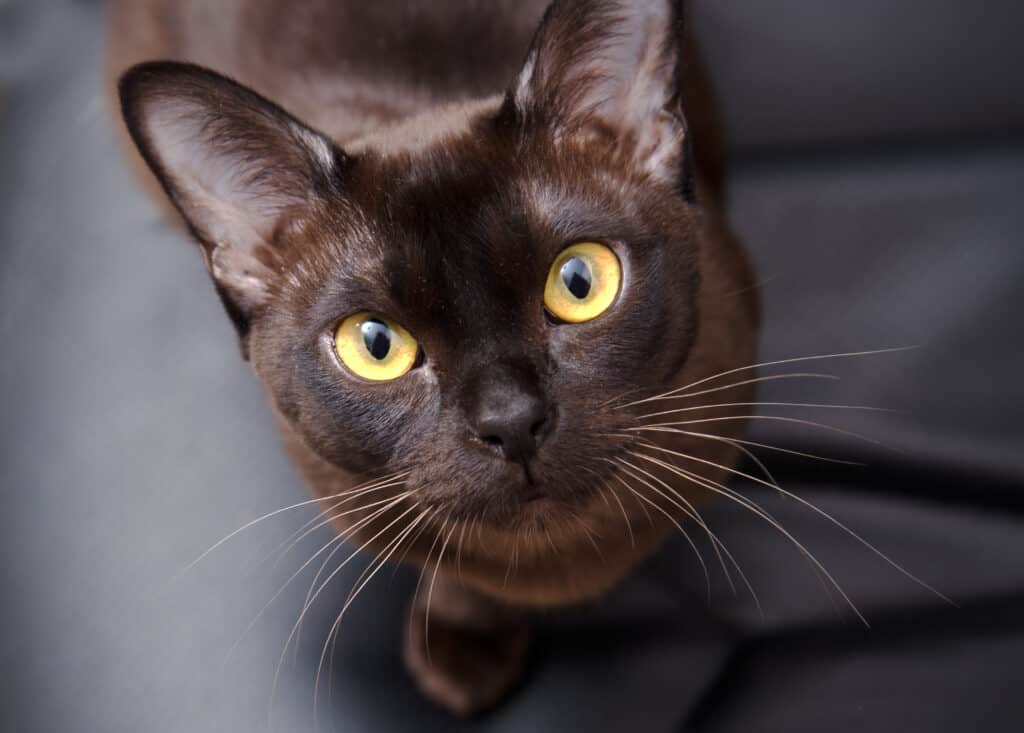
Burmese cats come in many colors. You’ll want to ensure you get your pal microchipped and supply an ID tag for safety purposes.
©woff/Shutterstock.com
Most folks pay between $10 and $50 per month on pet insurance, no matter what breed of cat they’ve got. For basic coverage for healthy, young cats, the rates will fall closer to the $10 mark. For older cats new to the policy, expect higher fees.
You’ll also need to consider the potential fees for:
- ID and tag: $15
- Spay or neuter: $145
- Microchip: $45 to $55
- Regular vet visits: $40 to $70
Basic Supply List for Burmese Cats
- ID tag and collar
- Microchip
- Food
- Cat toys
- Scratchers
- Litter box
- Cat litter
- Food and water bowls
- Grooming tools
Cost for Food
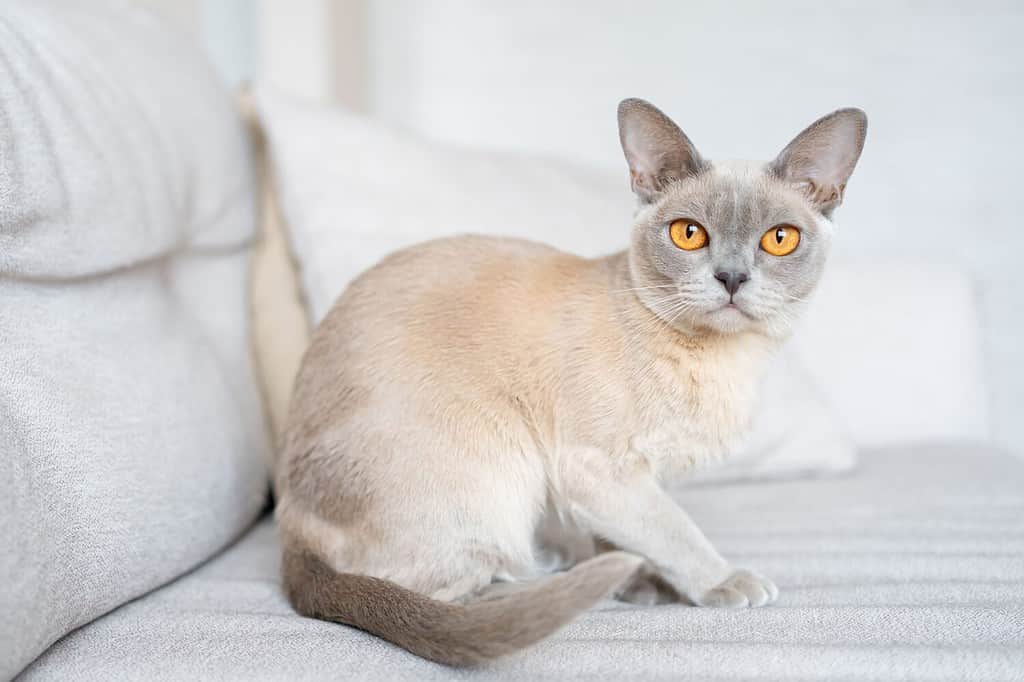
The unusual lilac Burmese cat is likely to cost more than a gray or brown Burmese unless you go to a shelter to adopt.
©Julija Sulkovska/Shutterstock.com
The average Burmese cat will need about $20 to $40 worth of food per month. They have healthy but not overly abundant appetites, though some will overfeed if allowed to free-feed. Provide them with high-quality, properly designed cat food designed for actual cats for the healthiest results.
Entertainment and Exercise
Cats require exercise and Burmese are a playful breed! This means they’ll need a good number of toys already at home when they join your household. You’ll probably spend about $20 to $50 on toys initially, replacing them or trading them out every couple of months for new, fresh, exciting options. You’ll most likely spend between $5 and $50 per month on cat toys. This includes cat scratchers, stick toys, ribbons, mice, and others.
Cost for Litter Box
A litter box, or several, depending on the size of your house, is necessary for the sanitation of your home. A single cat litter box could be as inexpensive as $5. They don’t need anything fancy. However, some folks choose to use self-cleaning litter boxes, hooded boxes, and various other forms. These can cost as much as $150.
Cost for Litter
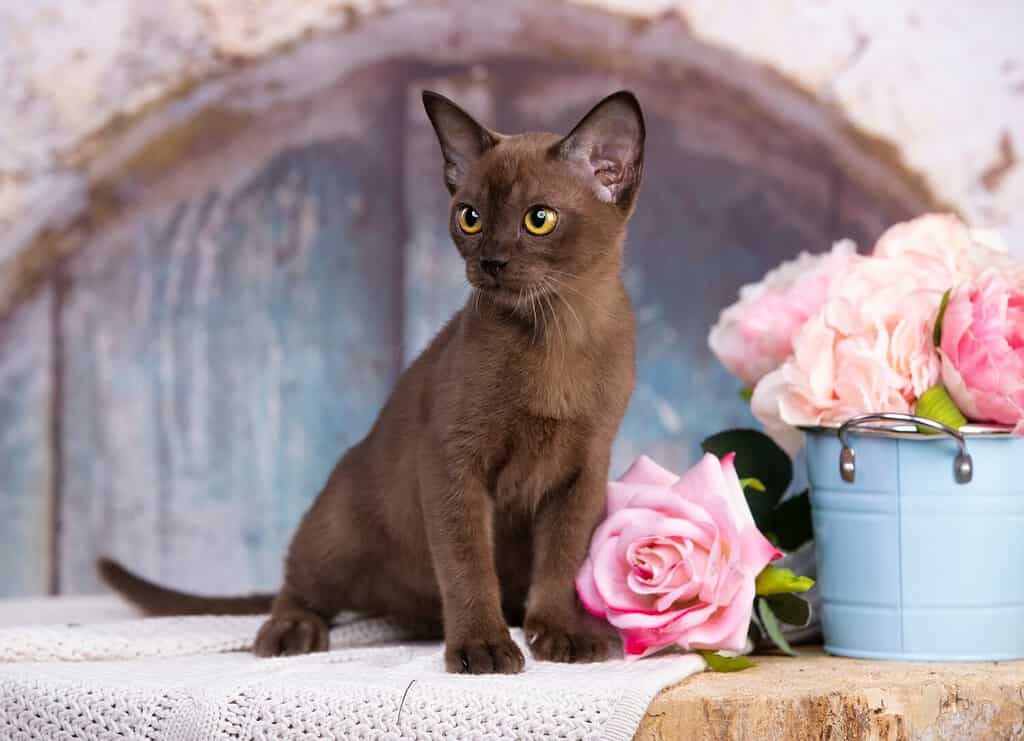
The younger the Burmese cat, the more expensive (or less so!) the cat could be. However, over its lifetime, the cat will likely cost about the same as any other breed, since they’re fairly hardy cats.
©Liliya Kulianionak/Shutterstock.com
Most folks spend between $17 and $60 per month on good-quality cat litter. For those looking to keep dust down, silica crystals are a great choice. For those looking for a more natural solution, walnut shells or tofu litter.
Cost for Food Bowls
Burmese cats don’t require special food and water bowls, so you can get away with the basics, running you around $1 per bowl. However, if you want a fancier setup or have other pets or travel sometimes, you may want to invest in some automatic feeders or raised dishes. These could run you as much as $20 for basic models to $150-plus for high-tech options.
Cost for Grooming
Burmese cat costs for grooming vary from household to household, primarily based on the owner’s preferences. Because the cats don’t shed much, they generally do okay with weekly brushing. However, the occasional water bath, nail trimming, and dental care is required for optimum health. Most folks spend $0 monthly, with the occasional $20 fee for grooming.
Total Costs of Bringing Home a Burmese Cat
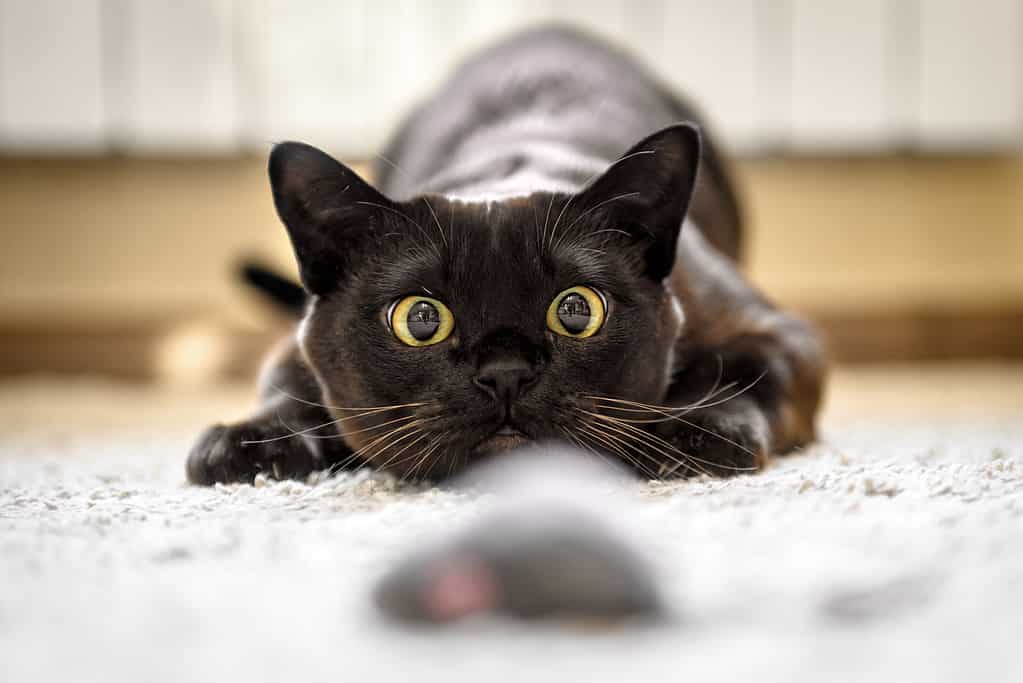
Be sure to provide your Burmese cat with plenty of toys and play space. This helps to keep them healthy and happy for their whole lifetime.
©scaliger/iStock via Getty Images
- Adoption/purchase — $0 to $1,500
- Insurance — $10 to $50
- ID and tag: $15
- Spay or neuter: $145
- Microchip: $45 to $55
- Regular vet visits: $40 to $70
- Food — $20 to $40
- Entertainment or toys — $20 to $50
- Litter box — $5 to $150
- Cat litter — $17 to $60
- Food bowls — $2 to $150
Total, it will cost you between $129 and $2,285 to bring home your Burmese cat.
Monthly Costs for a Burmese Cat
- Insurance — $10 to $50
- Food — $20 to $40
- Entertainment/toys — $5
- Litter — $17 to $60
- Grooming — $0 to $20
Once you bring home your Burmese cat, costs will range between $52 and $175 per month.
Owning a Burmese Cat on a Budget
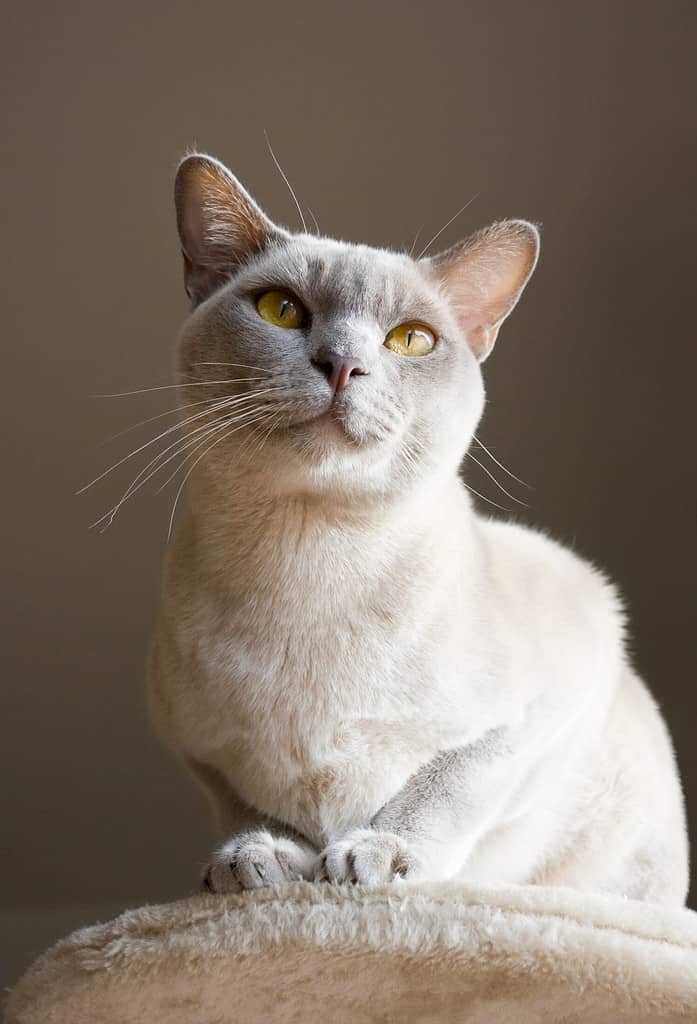
Beautiful Burmese cats make for excellent pets! They can be costly, though, like any other pet. You can save a bundle, though, with a few careful steps, including high-quality cat food, DIY scratchers, and plenty of toys and play spaces. Consider using basic shelves to create a vertical play wall for even more savings and fun!
©snowturtle/Shutterstock.com
Cats, generally, make for inexpensive pets once you purchase and bring them home. They don’t eat as much as dogs, for one thing, so food costs are a lot lower. Plus, they tend to entertain themselves, so a few inexpensive toys (and boxes!) will do it for them.
But, if you need to save some cash while raising a Burmese cat, these tips could help.
- Offer them cardboard boxes and homemade toys like twist-ties and rings from milk cartons. These serve as beds and hours of entertainment.
- Make DIY scratchers from cardboard boxes.
- Build a vertical playground using basic shelves and hardware from the local DIY store.
- Feed the cat high-quality food to help keep up her health. This will initially cost more, but in the long run, could potentially save you loads in health care costs.
- Purchase a cat fountain to help encourage your cat to drink more water.
- Brush your Burmese’s teeth two to three times a week to help prevent gum disease and other oral-borne conditions.
- Clip kitty’s nails every 2 to 3 weeks to help prevent ingrown toenails.
Interesting Facts about Burmese Cats
- Folks who often don’t like cats prefer the Burmese breed because of their doglike personality traits.
- These kitties descent from Wong Mau, a female cat important from Burma to America in 1930. The cat was then bred with a Siamese and resulted in this beautiful breed.
- Burmese cats are some of the most colorful breeds around. You’ll find crimson, lilac, or cream in their glossy coats.
- This breed of cat tends to form strong bonds with its human companions. For this reason, some folks call them the “Velcro cat.”
- Burmese cats can be loud, just like their Siamese ancestors.
The photo featured at the top of this post is © woff/Shutterstock.com
Thank you for reading! Have some feedback for us? Contact the AZ Animals editorial team.







